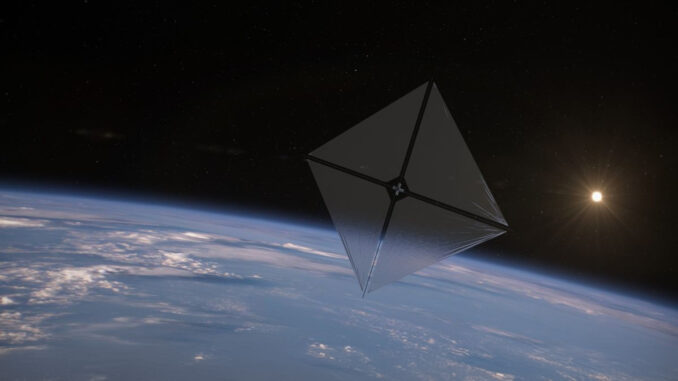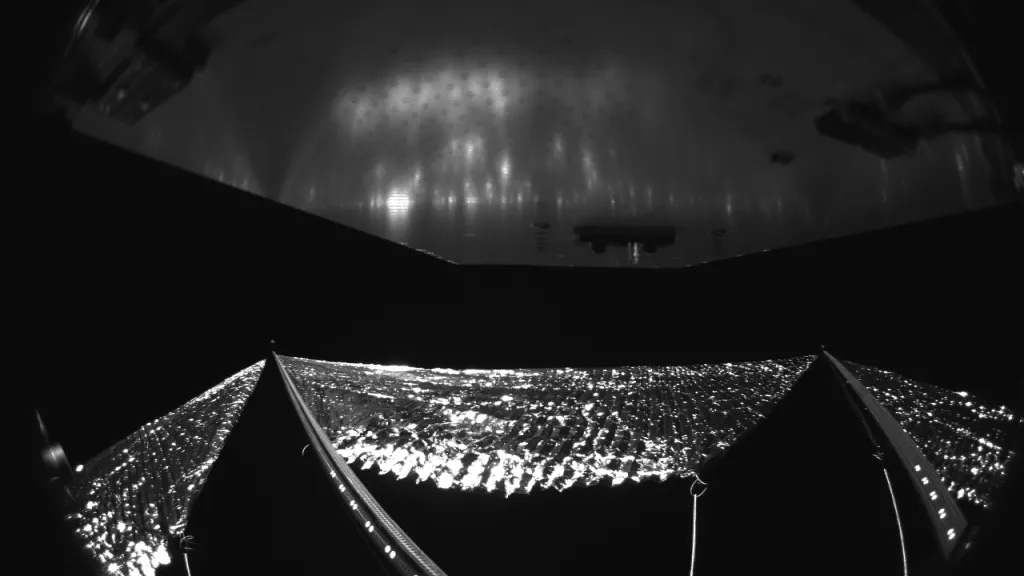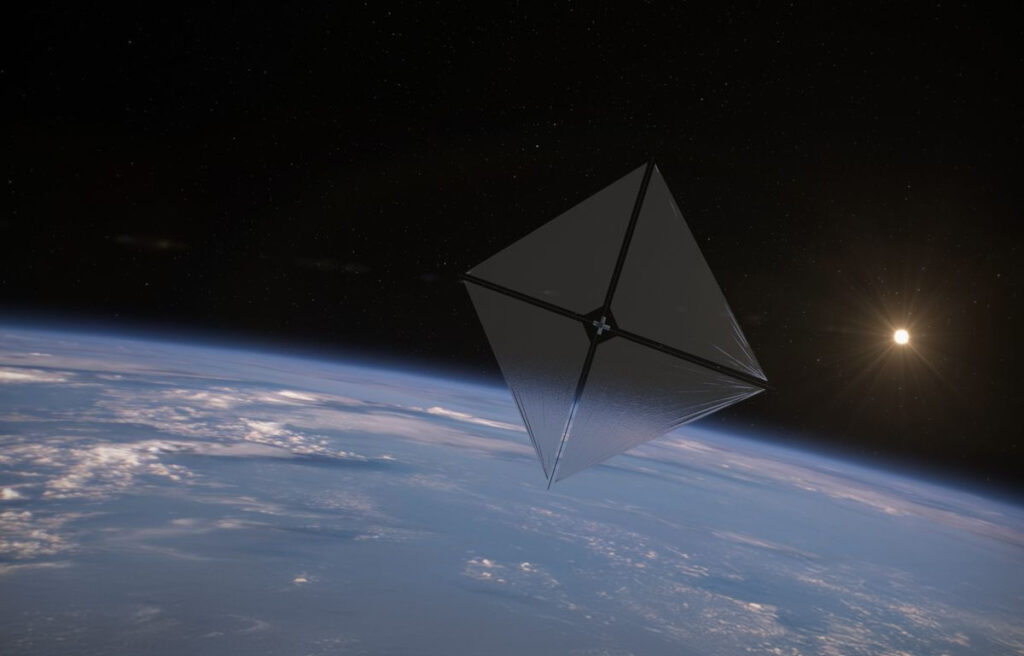
NASA has released the first image of its solar sailboat, an innovative space propulsion technology using photon pressure.
NASA recently unveiled its Advanced Composite Solar Sail System, a revolutionary space propulsion technology. On 29 August, the sailboat was deployed in space, although the first official image was not published until 5 September. The technology relies on the pressure exerted by photons to propel spacecraft, reducing dependence on conventional fuels. The sailboat, which is half the size of a tennis court, offers the promise of fuel-free propulsion over long distances, paving the way for new space missions.

Solar sailboat technology: a revolutionary concept
The concept of the solar sailboat is based on a fascinating physical principle: the use of the pressure of photons, particles of light which, although massless, can exert pressure when they strike a surface. In the case of NASA’s solar sailboat, this technology takes the form of a large reflective sail that captures the energy of photons to propel the craft into space.
The solar sailboat, with its 80 square metres of surface area, works in a similar way to a terrestrial sailboat, but instead of capturing wind, it captures sunlight. Each photon that hits the surface of the sail exerts a tiny pressure, but as there is no friction in space, this effect can generate a continuous acceleration. This means that, unlike traditional propulsion systems that rely on fuel, a solar sailboat can continue to accelerate indefinitely as long as it is exposed to sunlight.
This innovation paves the way for longer and more economical space missions. By eliminating the need to transport large quantities of fuel, solar sailboats make it possible to reduce the weight of spacecraft and extend their operational life. For example, an interstellar mission using this technology could potentially reach speeds much higher than those permitted by current propulsion systems.
The first image of the solar sailboat being deployed
On 5 September, NASA published the first image of the solar sailboat in orbit. Although the photograph may seem complex to interpret, it clearly shows the reflective sail and the composite booms that support it. The successful deployment of the sailboat is a crucial step in demonstrating the feasibility of this technology.
However, the published image is slightly blurred due to tumbling (slow rotation) of the structure in space. This behaviour is due to the fact that the satellite’s attitude control has not yet been activated after deployment. NASA engineers are currently analysing the data collected to better understand the behaviour of the sailboat and stabilise the spacecraft. This step is necessary before precise flight manoeuvres can be carried out.
The four wide-angle cameras installed in the centre of the structure captured the image, showing not only the sail but also the back of one of the craft’s solar panels. These panels are essential for supplying energy to the craft, although the solar sail is the main propulsion system.
Advantages and implications of solar propulsion
One of the major advantages of solar propulsion is that it makes it possible to harness an unlimited source of energy in space. Unlike traditional chemical engines, which require large and expensive fuel tanks, a solar sailboat needs only light to operate. This reduces the cost of space missions while increasing their lifespan and range.
Another crucial advantage of this technology is its ability to reach extremely high speeds. In fact, the absence of friction in space means that the spacecraft accelerates continuously, even if the acceleration is low. So, over long distances, a solar sailboat could outstrip craft propelled by traditional engines by reaching speeds of several hundred thousand kilometres per hour.
This technology could also play a central role in interstellar exploration missions. While current systems are limited by the amount of fuel on board, a solar sailboat could travel much further using only the Sun’s energy. Missions to the edge of the solar system, or even to neighbouring stellar systems, could become feasible thanks to this fuel-free propulsion.
The challenges of stabilisation and control
Although the deployment of the solar sailboat has been a success, a number of technical challenges remain, particularly with regard to attitude control and the stabilisation of the spacecraft. As mentioned earlier, the satellite has not yet stabilised its position, which makes it difficult to interpret the images and carry out precise manoeuvres.
Stabilisation is essential if the craft is to navigate effectively in space. Once stabilised, the NASA team will be able to test the craft’s manoeuvring capabilities by using photon pressure to adjust its trajectory. This process will also test the durability of the composite booms that support the sail, a key element in the design of this technology.
One of the critical aspects will be to test the resilience of the sailboat to the extreme conditions of space, including impacts from micro-meteorites and solar radiation. These tests will determine whether the technology is ready for larger-scale missions or whether improvements to the sailboat’s structure are required.

A promising future for space propulsion
The successful deployment of the Advanced Composite Solar Sail System marks a major step forward in the field of space propulsion. By harnessing the pressure of photons to propel fuel-free craft, this technology could transform the way we explore space. Long-distance missions will become more affordable and sustainable, paving the way for expeditions to far-flung destinations.
Although challenges remain, particularly in terms of stabilising the spacecraft and managing its trajectory, the initial stages of this mission are extremely promising. If NASA succeeds in stabilising the craft and demonstrating its manoeuvring capabilities, the solar sailboat could become a viable solution for many future space missions.
The development of this technology is a testament to human ingenuity and our ability to push back the boundaries of space exploration. As further advances are made, we can expect to see solar sailboats playing a central role in interplanetary and interstellar missions.
War Wings Daily is an independant magazine.